During training we walked through the woods to view a cougar kill site from last fall. The cougar that killed this deer was a 4.5 year old female who was later shot in the Kaibab National Forest by a hunter. Once they leave the protection offered by the national park they are fair game during the right hunting season. Average life expectancy is 8-10 years.
What we found was a bunch of mule deer fur, not even any bones in the area. A mountain lion will usually stay by a kill for 2-5 days. After eating its fill, starting with the organs, they bury the carcass under forest duff to protect it from insects and other predators.
P1 collared at GRCA http://i53.photobucket.com/albums/g62/TigerQuoll/cougar/P1.jpg
Brandon, one of the Grand Canyon’s wildlife biologists, specializes in cougars and follows the daily movements of 32 collared cats on the South Rim and 5 on the North Rim. How does he catch a cougar? By laying out a padded leg trap, that gives off a radio signal, in a slight depression and usually in a drainage where they are known to travel. When a signal indicates the trap has been set he hikes to the location and from a safe distance uses a blow dart to tranquilize the cat. Brandon said they are usually pretty docile when he gets there, but he still doesn’t just walk up to a mountain lion and pet it.
After the big kitty goes to sleep blood is drawn and the radio collar attached (the black box with two screw heads). To the right is the VHF and GPS antenna. The larger box on the left contains a mortality sensor, GPS receiver, VHF beacon and an ARGOS antenna with uplink that sends a GPS location six times a day—sometimes via France—and records other information also. Cats are rough on the collars which only stay active about 14-18 months.
cougar crosses canyon http://www.nps.gov/grca/naturescience/images/P05-Cross.jpg
In total, Grand Canyon biologists have collared 61 adults and five kittens since the cougar study began in 2003. 70,000 GPS locations and about 600 kill sites have been documented.
There’s certainly nothing to over worry about being attacked, especially up here on the Kaibab Plateau as there is plenty for cougars to eat: deer, turkey, coyote, an occasional porcupine, cottontail or pocket gopher and there’s a Lot of mule deer on the North Rim and Kaibab National Forest.
cougar tracks image http://www.sierraphotography.com/coyoteoakjournal/jphotos/012600_32b.jpg
Yet it’s a good idea to know how to recognize cougar tracks. The key is the bumps on their pads, two in the front and three in the back. If you do come across a mountain lion, DO NOT RUN. Yell, throw things, pick up small children—put them on your shoulders—look as big and mean as possible. Chances are they will run the other way before you have time to catch your breath.
No matter what you call these big kitties, they are magnificent. This cougar captured my heart when I was an animal keeper at the California Living Museum. I was honored to be so close to her while my heart broke that she would never be free.

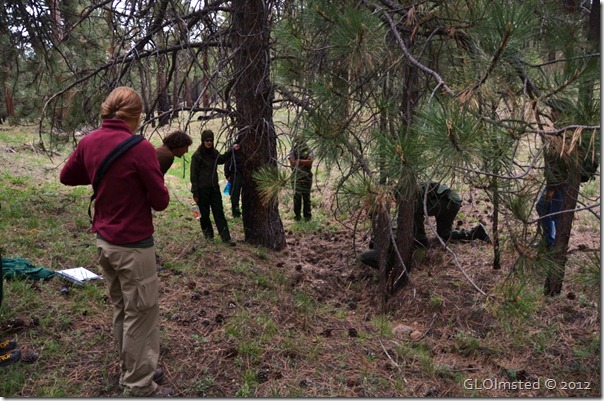
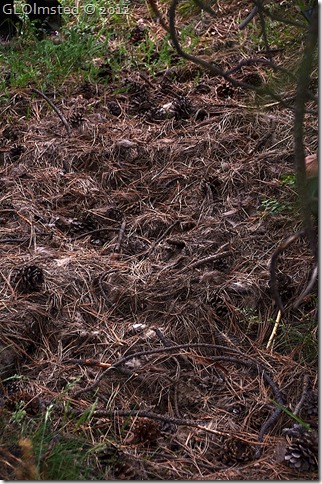
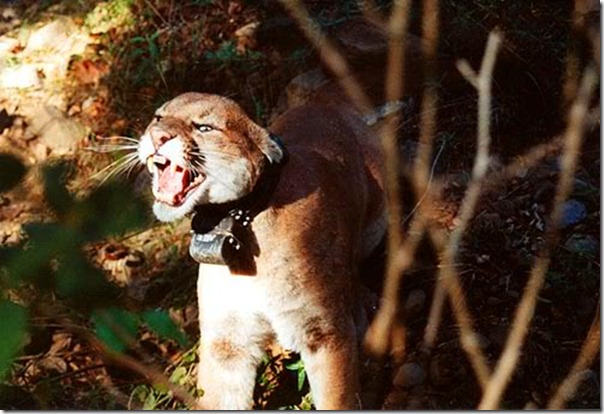
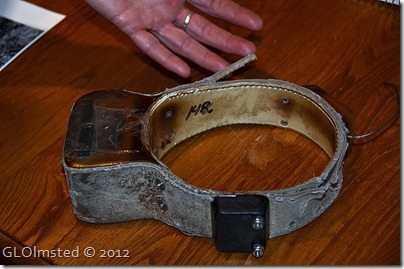
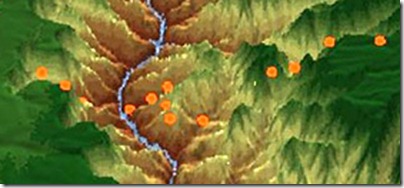

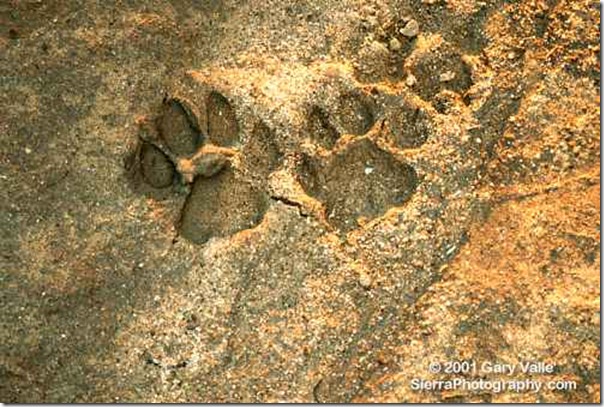
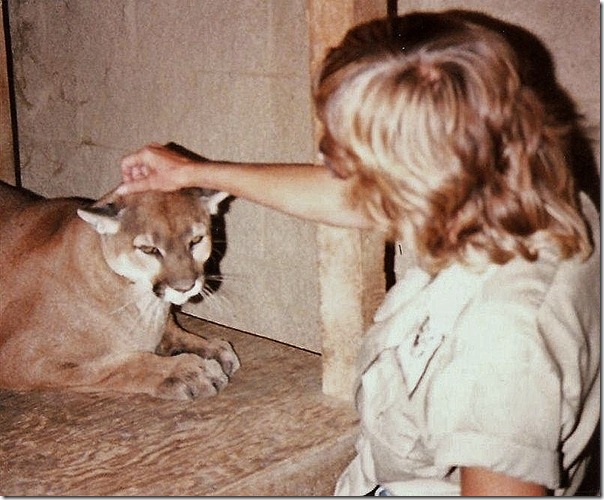
Interesting job for your coworker. Blowdart distance would still make me extremely nervous. Love the track of the cougar crossing the canyon. Great post.
I truly hope to see a cougar and now have a better idea where to look. Not that I’m going lion chasing. Yet those of us in the field can help with the research.
Great post. I had no idea that cougars, mountain lions, panthers, pumas, and catamounts were actually all referring to the same animal.
Typically regional names.
Wow, such beautiful cats – why would anyone hunt them, it’s not like you’re going to put cougar meat in the freezer for the winter. Such a shame.
Unfortunately there are still some hunters that would love the trophy. Plus if hunting deer, elk, whatever meat game, hunters often carry a cougar tag for protection if they have the need.
Interesting… We were just talking with my brother about bears; while we know what to do with Grizzly’s, we couldn’t decide what you were suppose to do with Black Bears.
Black bears are usually pretty easy to scare off with noise. No bears at the North Rim, or in the canyon.
Pity they have to get shot!
Life, I suppose…
I’ve only seen two in the wild in my lifetime…and they were always by accident. One time I was taking garbage out at 4 or 5 in the morning and the big lady was sitting in the alleyway……I calmly threw the garbage into the bin and walked slowly back to the gate and ran to the patio:) That was amazing. Really great post again today…full of fun info. I didn’t know about the tracking bit. Amazing creatures!
They are beautiful animals. I’m glad they’re being studied and protected as much as possible.
Thanks for the informative and enlightening post! Your timing is perfect as I’m heading into the north Kaibab soon.
They are to you what leopards are to us. Just a pity they get targetted by farmers and because of it their numbers go down.
Did you work at the California Living Museum outside Bakersfield? Maybe we have met. I used to take my students there on our Death Valley trips, until they gave most of the fossils back to the museum downtown.